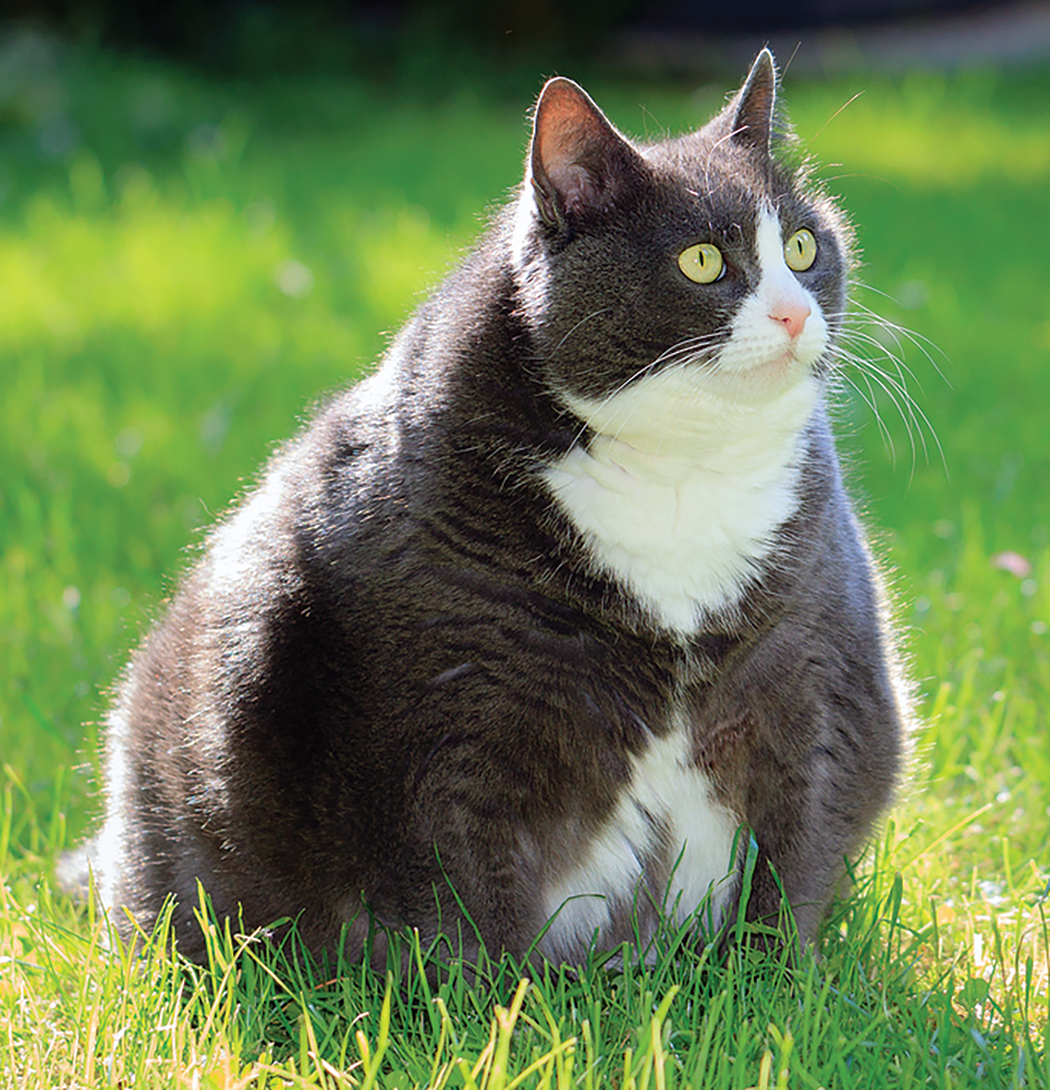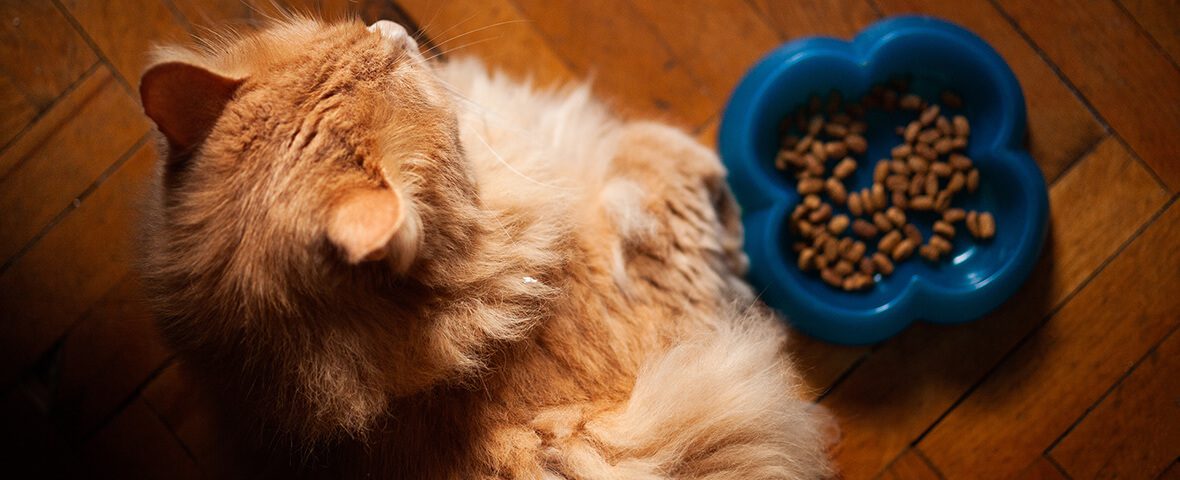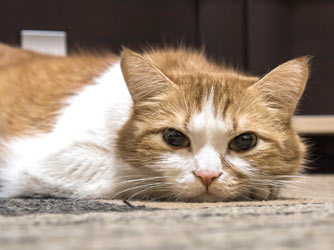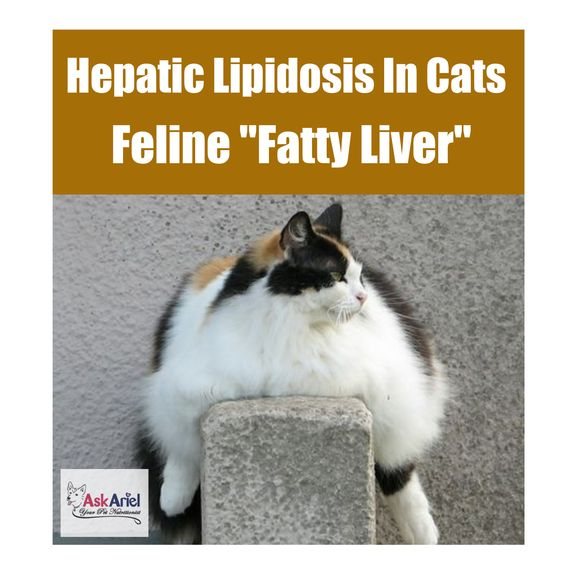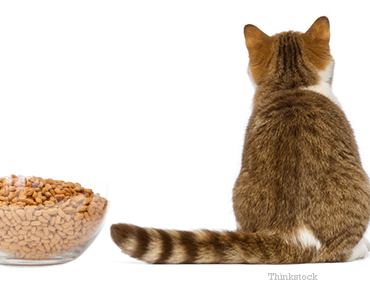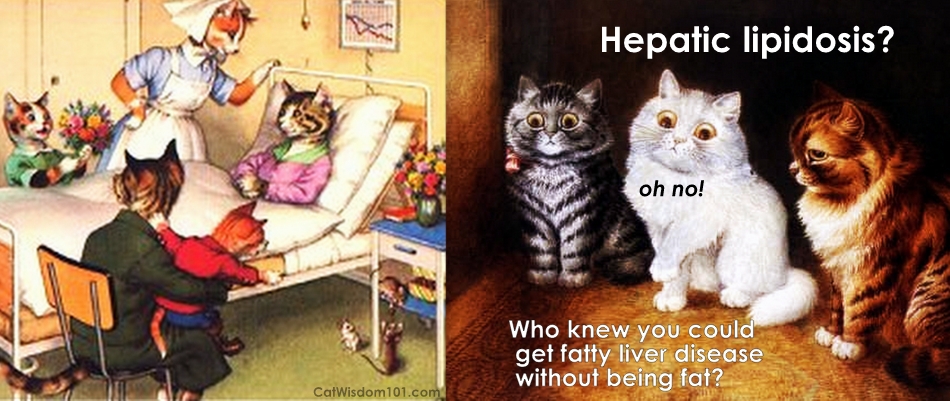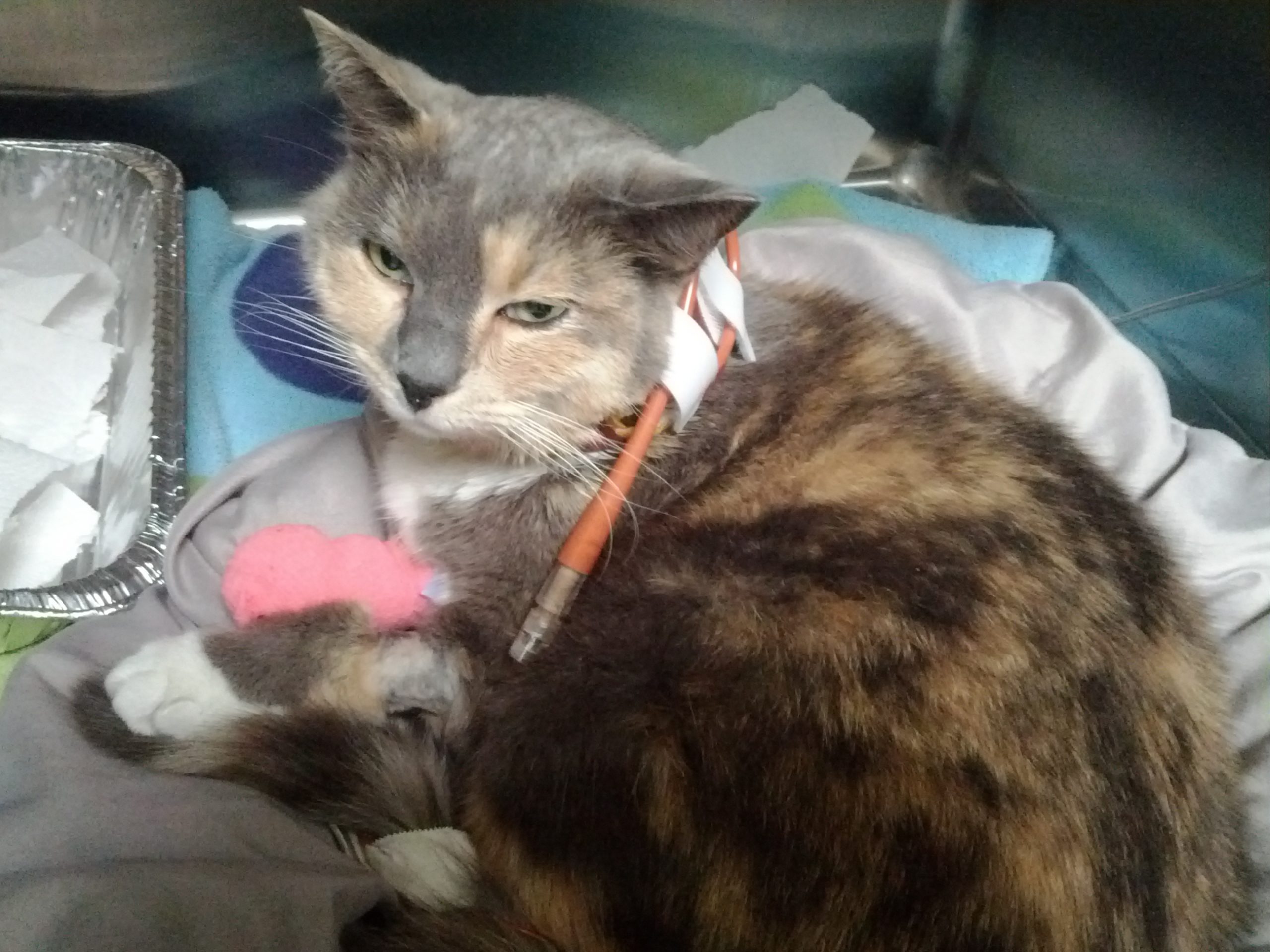One should therefore tube feed these cats as soon as the diagnosis of hepatic lipidosis has been made rather than offer several commercial diets that the cat can develop an aversion to.
Diet for cats with hepatic lipidosis.
Carbohydrates poorly handled in stressed cats.
Cats should not be offered any food by mouth for approximately 10 days following placement of a feeding tube.
Dextrose supplementation may thwart adaptation to fatty acid oxidation.
Avoid lactate containing and dextrose supplemented fluids.
As she get more nutrients from food the fat can be slowly moved out of her liver through normal metabolic processes.
If the cat is unwilling to eat anything a feeding tube should be placed to avoid a negative energy state and the development or worsening of hepatic lipidosis fatty liver syndrome.
Owners need to work.
The cat should be fed a diet that contains plenty of nutrients which will change his metabolism and help assimilate the fat cells.
The most commonly used feeding tube is an esophagostomy tube a tube that goes into the esophagus through a small incision in the side of the neck.
If your cat is not willing to eat a sufficient amount of food on its own you will need to force feed the cat either by placing the food at a place in its mouth.
The best way to ensure that cats with hepatic lipidosis receive adequate consistent nutrition is to have your vet place a feeding tube in your cat.
Many cats with hepatic lipidosis will need a feeding tube for several weeks some for even longer until.
Your cat will be released from the clinic when its condition has stabilized.
High lactate associated with hl.
When ascites fluid retention in the abdomen is a problem a very low sodium diet will help prevent worsening of the condition.
Although the condition is likely to be fatal if not treated promptly says dr.
Your veterinarian may give your cat vitamin supplementation including b complex vitamins cobalamin and thiamine.
The main treatment for this condition is dietary.
This should be documented with a lateral thoracic radiograph.
Once placed owners can feed a high calorie diet as well as administer various other necessary medications until the condition resolves.
The prognosis for ihl is.
A high protein calorie dense balanced feline diet is recommended for e tube feeding.
Introduction of food to cats with hepatic lipidosis should be initiated slowly and the amount of food increased to normal amounts over the course of several days.
If hepatic encephalopathy is present a diet with low protein levels can help reduce the production of ammonia a by product of protein digestion.
Center cats that manage to survive an episode of the disorder rarely relapse.
Slow feeding allows the cat to adjust and start to shift her metabolism away from using her own fat stores.
No medication is needed.
The ideal diet for fhl should be high in protein minimum 30 to 40 percent of the metabolisable energy moderate in lipids approximately 50 percent of the metabolisable energy and poor in carbohydrate approximately 20 percent of the metabolisable energy.
Fluid treatments routinely used in rescuing cats with hepatic lipidosis fluids.
Most of the time the cat must be force fed as he will refuse to eat.
If a cat is successfully treated for early stage hepatic lipidosis and sent home which can take place in just a few days its owners will have to continue tube feeding it usually for a month or so.
Although this sounds dramatic it really is not too bad.
Treating hepatic lipidosis fatty liver disease can be treated through diet.
